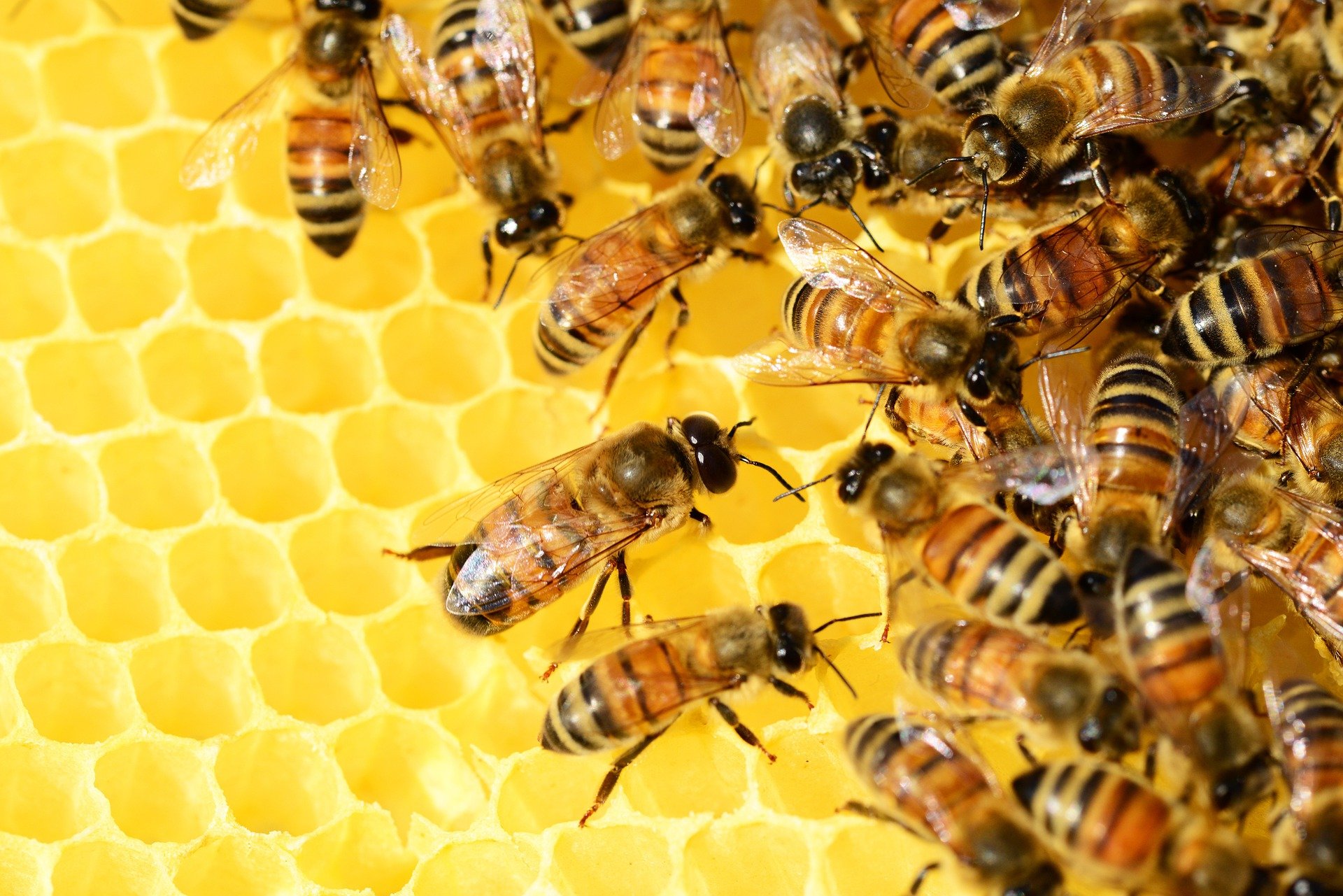All About Bees by HalloweenCostumes.com

By: FUN Monster
Approximately 20,000 different bee species live around the world. Bees are pollinators, which means that they help plants by transferring pollen between different kinds of flowering plants. Bees carry pollen on their bodies and legs, and as they move from plant to plant, they move pollen along with them.
Bumblebees
Bumblebees help pollinate plants, including food crops. Bumblebees live in large colonies, and they are considered social bees.
- Bumblebees are about one inch long and oval-shaped.
- Bumblebees can sting more than once; their smooth stingers don't get caught in the skin.
- Bumblebees often make nests in the ground, but they might also make nests under roof beams and in attics.
- Bumblebees buzz loudly when disturbed, and they will defend their nests.
Carpenter Bees
Carpenter bees live alone. These bees build nests for themselves, and they take care of their own young. Carpenter bees got their name because they are able to drill through wood.
- Carpenter bees are about one inch long and oval-shaped.
- Carpenter bees do not have barbed stingers, so they can sting more than once.
- These bees gather nectar and pollen to feed their larvae.
- Carpenter bees drill into wood to lay their eggs in a protected place. The tunnels they drill are usually only a couple of inches deep, but they could be as long as 10 feet. Different rooms along the tunnels are where they store eggs and food.
Honeybees
Honeybees live around the world in large colonies. These social insects' colonies may last for many years because they huddle together over the cold months to stay warm.
- Honeybees are about a half-inch long and oval-shaped.
- Honeybees pollinate more than 100 different crops in the United States.
- Honeybees usually build nests in the crevices of trees, but they will also build nests on the exteriors of buildings. Their nests vary in size.
- The buzzing noise from honeybees comes from their flapping wings, which they flap about 11,000 times per minute.
- Honeybees have barbed stingers, so they can only sting once.
- Honeybees make honey from the nectar and pollen they collect from plants. They store their honey in their nests in honeycombs, and they feed the honey to their young over the winter.
Killer Bees
Killer bees are also called Africanized bees, and they look a lot like honeybees. These bees live in South America and in southern and western states in the United States.
- Killer bees are a half-inch long and oval-shaped. Their wings are differently shaped than honeybee wings.
- Killer bees live in colonies like honeybees, but the colonies are smaller. Killer bees may build nests in tires, boxes, empty cars, and other unusual places.
- Worker killer bees gather nectar and pollen to feed the bees in their colonies.
- Killer bees are no more venomous than honeybees, but they usually attack in greater numbers, so victims are more likely to have an allergic reaction.
Beekeeping for Beginners
Beekeeping is a way to help honeybees survive. If you start your own hive, you can produce your own raw honey, and you can also help sustain these important pollinators.
- Research to learn as much about beekeeping before you start. Buying your equipment will probably be expensive.
- Order bees over the winter, and be ready for sellers to sell out of their inventory.
- Choose the location for your hive carefully, as you won't want to move it after you've set it up. The queen needs to be healthy and active, and she goes into the hive first. The rest of the bees go in after the queen.
Additional Bee Resources
- Top Ten Facts About Bees
- Honeybee Basics
- Neat Facts About Bees
- The Honeybee
- Pollinator of the Month: Bumblebees
- About Bumblebees
- Bumblebees vs. Honeybees: What's the Difference, and Why Does it Matter?
- Five Facts About Bumblebees and How to Help Them
- Field Guide to Bumblebees
- Carpenter Bees
- Overview of Carpenter Bees
- Carpenter Bee Behavior
- All Buzz, No Sting: Carpenter Bees Do Just What Their Name Suggests
- The Problem With Honeybees
- Feeding Honeybees
- Africanized Bees
- Killer Bees: A Deadly Swarm
- Africanized Honeybee
- Overview of the Africanized Honeybee
- Who Can Stop the Killer Bees?
- Information About Africanized Honeybees
- Beekeeping for Beginners
- Beekeeping for Beginners: Everything to Know About Starting Your Own Colony
- 14 Backyard Beekeeping Tips
- Beekeeping Basics: How to Raise Honeybees in Your Backyard
- Basic Beekeeping Techniques

